Wagner Society of New Zealand review
Please click on the link below to read PDF version.
Please click on the link below to read PDF version.
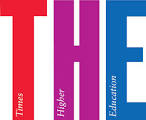 Rarely do I encounter a book about Wagner that is written from a stance of complete and intelligent openness to his message, and it came as a surprise, therefore, to encounter Paul Dawson-Bowling’s The Wagner Experience: And Its Meaning to Us (Old Street), a penetrating survey in two volumes by a doctor whose life has been changed by Wagner in just the way that mine has been.
Rarely do I encounter a book about Wagner that is written from a stance of complete and intelligent openness to his message, and it came as a surprise, therefore, to encounter Paul Dawson-Bowling’s The Wagner Experience: And Its Meaning to Us (Old Street), a penetrating survey in two volumes by a doctor whose life has been changed by Wagner in just the way that mine has been.
Someone very special is having an occasion to celebrate or you just feel like spoiling yourself! This set of two wonderful books, beautifully presented, truly makes the ideal gift. But not only that! They are a “must have” as a reference to Wagner’s life and his incredible compositions and are ideal for placing in the lounge or bedroom for visiting guests to browse through, or for refreshing one’s memory of the stories, the sources and the lessons of Wagner’s great dramas before attending a performance.
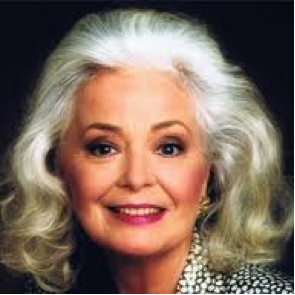 We are extremely fortunate to have Paul Dawson-Bowling and his lovely wife Elizabeth de la Porte, who is a superb harpsichord player and has been teaching at the Royal College of Music for over fifty years, as two loyal and devoted members of our Wagner Society. Paul is a retired General Practitioner from an era when this meant “family doctor”, and he takes us gently by the hand and guides us lovingly through this enormous undertaking of relating the tempestuous life of Wagner with great enthusiasm, wisdom, humanity and psychological understanding.
We are extremely fortunate to have Paul Dawson-Bowling and his lovely wife Elizabeth de la Porte, who is a superb harpsichord player and has been teaching at the Royal College of Music for over fifty years, as two loyal and devoted members of our Wagner Society. Paul is a retired General Practitioner from an era when this meant “family doctor”, and he takes us gently by the hand and guides us lovingly through this enormous undertaking of relating the tempestuous life of Wagner with great enthusiasm, wisdom, humanity and psychological understanding.
His dedication: “To My Wonderful Wife Elizabeth Was je ich ersehnt, ersah ich in dir”, (Everything I ever longed for, I saw in You), Siegmund: Die Walküre Act I, makes it clear to us that this is a man, enriched by the joy of sharing the holy art of music with his wife and family and also with all of us. There have been literally hundreds of books written about Wagner; but there is no other book quite like this. It is written in a language which is elegant, beautiful, and understandable to all. One feels that a very dear friend is guiding you through this journey of Wagner’s life, with a desire to share his own love and admiration for the composer in order that you may also share his incredible Wagner experience.
He has done tremendous research and delves into every aspect of Wagner’s life and his music dramas. One constantly discovers things that you may somehow have missed in the past, like the fact that Wagner had originally intended the scene in Das Rheingold between Wotan and Erda to be with the three Norns. Also, his descriptions of the wildly intense, sensuous relationship with Minna are a revelation. They met when he was just 21 – 31 –years old. She was three years older than him and was an extremely beautiful woman and a very talented actress. She went through heaven and hell with him on his various escapades, fleeing because of their debts, being shot at by border guards, causing their carriage to overturn resulting in Minna having a miscarriage which was probably the cause of her childlessness afterwards. Also the near shipwreck on the flight from Riga to London, which was the inspiration for Der fliegende Holländer. She was so terrified that she begged Richard to lash her to him, so that they could drown and perish together. No wonder that she became the source and inspiration for all the heroines in Wagner’s dramas! She was his muse and in her he saw his archetype, his ideal, the perfect example for Elisabeth, Venus, Elsa, Sieglinde, Brünnhilde, Senta, Eva and Gutrune. Mathilde Wesendonck became his muse for Isolde when the love between Wagner and Minna began to fade, but he continued to hope and believe that each new attraction would bring him that same heightened state of mind and being which Minna had brought him.
The first Isolde was sung by Malvina Schnorr von Carolsfeld who, after the death of her husband Ludwig three weeks after singing the première of Tristan, believed that the ghost of her husband said that she was destined to marry Wagner. She wrote incensed letters to King Ludwig, complaining about Wagner’s liaison with Cosima after discovering that Cosima was highly pregnant and was banished by both Wagner and the king. Whilst in Dresden to perform “O Malvina” I went to visit the family grave of Malvina and Ludwig and discovered to my astonishment that Minna is buried directly next to it. Richard and Minna were married for over thirty years but were together for only twenty; partly because Mathilde Wesendonck and Cosima entered his life. One tends to think of these two women as being the main loves of Wagner’s life, but this was because Minna was somewhat banished into oblivion by Cosima, who successfully destroyed many of Wagner’s letters and made cuts in others.
The Wagner Experience is unique because not only does it give a brief biography of Richard Wagner, an extensive account of his tumultuous life and excellent, detailed explanations of the sources and lessons of his great dramas, but it also includes an abundant wealth of glorious illustrations which are largely determined by the archetypes inherent in Wagner’s Operas. There are some very unusual sets of cards: “Liebig’s Fleisch-Extract”, from a sort of Oxo/Marmite Company which show us how Wagner was popularly presented in Germany 100 years ago and some beautiful pictures showing the style of Wieland Wagner’s productions, which were very prominent in the years after the re-opening of the Bayreuth Festival after the War. I was fortunate enough to sing very often in these productions, especially Der fliegender Holländer, Die Walküre and Parsifal. There are eight of the twelve incredibly beautiful Richard Wagner illustrations from the original oil paintings by Ferdinand Leeke (1859-1923) which were painted circa1900-10, a very interesting self-portrait as Lohengrin by Ludwig Schnorr von Carolsfeld which illustrates to us that he not only sang these heavy Wagner roles in his twenties (he sang Tristan aged 29 and died shortly afterwards from a lung disease, not from the strain of singing the role as is often said) but also inherited his father’s talent for painting. Another surprise picture shows the author’s mother-in-law Betsy de la Porte as Waltraute in Die Walküre at Covent Garden in 1935, which conjures up visions of Hojotohos ringing through the family home and mutual enjoyment sharing Wagner’s music, and which makes it even clearer why this wonderful book has been written.
However, my favourite pictures are those of Arthur Rackham (1867-1939). They are incredibly beautiful, highly imaginative scenes from the mythology of The Ring which – 32 – were my inspiration to all the various roles that I sang in it: Wellgunde a Rheinmaiden, Ortlinde a Valkyrie, Sieglinde, Gutrune and Brünnhilde. I would have given anything to have been able to perform these roles in these costumes and surroundings and am convinced that many of us would love to see a production in this style again. I would certainly try to create similar visions with the aid of modern techniques if I ever had the chance to produce a Ring myself.
The Wagner Experience is a resource that lights up the golden depths that are already present in Wagner’s great dramas. It helps us to see their important lessons and ideas which mean we can live better, and reminds us of the original didactic aspects of the dramas. It encourages and inspires us to seek our own understanding and morals through the wise lessons and advice conveyed in the text and action. It explains how they enable us to have life more abundantly, enriched by the enormous power and beauty of the music, which often transports us to heavenly spheres.
I hope that Paul Dawson-Bowling’s The Wagner Experience will reach and inspire new audiences, as well as reviving the enthusiasm of mature Wagner lovers. It is like having three books in one, because it places Wagner’s life, his work and a fabulous array of exquisite illustrations before us in a nutshell. We must be grateful that he has so generously shared his “Wagner Experience” with us and I am sure that everyone who reads it will be filled with renewed admiration and understanding for this great composer and his works.
The rrp is £35 but I have established that signed copies are available £5 cheaper and postfree in the UK at www.thewagnerexperience.co.uk. The book is also available from Blackwell’s and all good bookshops, everywhere online, and in Kindle edition.
Talk and book signing at Oxford University alumni weekend
Saturday 20 September at 11.45am–1.00pm
Maths Institute
Andrew Wiles Building
Radcliffe Observatory Quarter
Woodstock Road
Oxford
OX2 6GG
This event argues for Richard Wagner as one of prophets of the 19th Century. It emphasises Wagner’s importance as a supreme musician and a myth-invoking dramatist, but also his significance culturally, politically, and sociologically, for telling us things of importance for us and our time, perhaps for all time.
This runs against the common notion that Wagner was bad, an evil influence, a misguided notion which stems partly from the belief that he was a trailblazer for Hitler and Nazi Germany. These beliefs are erroneous, as this event makes clear.
The event then goes into the Wagner Experience as a whole, explaining what it is, how it works, and what makes it extraordinary, “not a new pleasure but a new kind of pleasure, if indeed pleasure is the right word, rather than trouble, astonishment, ecstasy, a conflict of sensations without name”. The plan is to illustrate the event with musical examples but it will become clear that the Wagner Experience is not simply a musical one but something more like falling in love or religious conversion. The event goes into some of the vital ideas which Wagner modelled in his dramas, both for living life more abundantly and for creating a better world.
For more information about the talk and the weekend, please see the Oxford Alumni website PDFs below.
Oxford alumni weekend planner (PDF)
Oxford alumni weekend brochure (PDF) – details of Wagner event on page 19
I have greatly enjoyed reading The Wagner Experience. It is in every way remarkable, and I am convinced that it communicates essential truths and modes of understanding Wagner and his creative achievements much more effectively and much more perceptively than many other recent publications. Consequently I intend to recommend the book to all enquirers.
Its author seems to strike an admirable balance between what needs to be set out about Wagner the man and the relationship between the man and his compositions. He conveys the dazzling scale of his intellect, the astonishing intensity of his insights, and his unique capacity to integrate the dramatic and the philosophical aspects of his genius in a comprehensive art work which enfolds and inspires the listener in a breathtaking experience of unequalled intensity.
Impressive though the author’s enthusiasm is, it never betrays him into excess or lack of aesthetic balance. I especially appreciate the discussion of Parsifal which does full justice to the Christian elements in the work while recognising the presence of other influences, all of which make a coherent whole, given the astonishing control exercised by Wagner’s powerful intellect. I too cannot understand how anyone could deny that Parsifal is a religious work and I fear that many commentators, like too many modern producers, impose their own often obtuse interpretation on Wagner’s text. Dawson-Bowling’s discussion of the influence of Schopenhauer on Tristan and Meistersinger is a model of balance and perception, and he has presented Tannhäuser to me in a new light. Dawson-Bowling’s criticism of the familiar contrast between sacred and profane love is beautifully expressed and the claim that Wagner was arguing for balance and responsibility in human relationships, with due recognition for the ‘erotic’ and the ‘altruistic’ is thoroughly convincing. I am in absolute agreement with his forceful and well argued rejection of the current tendency to see “anti-Semitism” as the central theme in Wagner’s creations and with his dismissal of the notion that Beckmesser is meant to be a Jewish caricature. I particularly savoured the comment that the portrayal of the town clerk is really a satire on certain German characteristics.
I also welcomed the quotation from Tolkien about the ‘ruddy little ignoramus Adolf Hitler’ which was new to me. Like many Wagnerites, I am thoroughly weary of the popular association of Wagner with Hitler: the question is not whether Hitler enthused over Wagner’s operas but whether or not he properly understood his message. The late Deryck Cooke was right to summarise The Ring as the struggle between the love of power and the power of love, and the reference to Hitler telling Goebbels that religion should be banished from Parsifal reveals how far he was from truly understanding Wagner: compassion seems to me a recurrent theme in Wagner’s output even though it is given its most intense expression in Parsifal. In fact Hitler intended to have a new libretto written for Parsifal to bring the work into line with Nazi ideology.
The great Congregationalist theologian, P.T. Forsyth, whose theology anticipates that of Karl Barth in some ways, was present (through the generosity of affluent friend) at one of the performances of Parsifal at Bayreuth in 1882, and rather like Newman in 1951, regarded it as one of the greatest spiritual experiences of his life; his daughter claimed that he thought there was something ‘sacramental’ about the work. Forsyth wrote two interesting essays relating to Wagner; one was about the philosophy of pessimism which he regarded as one of the most impressive attempts to understand life from a non-Christian perspective; the other was on Parsifal, in which he discussed the Christian elements in the work. I liked the reference to the young Felix Weingartner at Bayreuth in 1882. His memoirs include a reference to his meeting with Wagner, who jokingly said to Weingartner, “Young man, at your age, you will be chiefly interested in the flower maidens!” Like Queen Victoria, Weingartner noted that the idea had a strong Saxon accent, and how important it is to remember that Wagner was a Saxon and not a Prussian or a Bavarian.
I enjoyed the selection of illustrations: the box cover and the dust jacket displays what has long been my favourite portrait of Wagner (it graced the cover of the festival booklet when I first visited Bayreuth in 1962), and I have always liked Arthur Rackham’s illustrations for The Ring. The scenes from the Karajan Salzburg productions of Lohengrin and Tristan and Isolde are breathtakingly beautiful as are those I have seen from his Salzburg Meistersinger. One or two of the Leeke illustrations were familiar to me from the old publications but I have never seen the ‘Liebig’s Fleisch Extract’ illustrations before. In their way I find them charming as well as being a reminder that in earlier eras an awareness of high culture was much more widespread throughout society than it is today.
This book is a wonderful culmination to a lifetime of devotion, and deserves to be widely read and bough in large numbers. Any one reading the book will have a well-informed, sympathetic, perceptive understanding of Wagner without any neglect of the more difficult aspects of his personality – the egocentricity, the mood swings, the anti-Semitic prejudice. There is however one inaccurate reference to which I must draw your attention: the famous cry of the crowd, “His blood be on us and on our children” is from St Matthew’s Gospel, not St John’s Gospel. This is significant, given that St Matthew’s Gospel is often seen as the most Jewish of the Gospels.
A last point: I like the dust jacket photograph of the author and Wolfgang Wagner: Wolfgang has been bitterly attacked particularly in recent years, but he did so much to keep Bayreuth going – yet was criticised by many for being too conservative and too radical. So much praise has been heaped on Wieland that Wolfgang has never been given due recognition – and as for Winifred, that’s another story.
With 800 pages of text plus 100 more of illustrations, this monumental work invites comparison with Ernest Newman’s 736 page The Wagner Operas, its predecessor by 64 years which provided this reviewer’s epiphany regarding Wagner’s canonical output. Wagner News readers who are familiar with the work of Paul Dawson-Bowling are likely to have positive expectations of his magnum opus. As one whose fairly diligent reading over the last 20 years or so has resulted in an accumulation of the “usual” yard and a half shelf-full of Wagner books I was not expecting The Wagner Experience (to use a less unwieldy version of its title) to provide me with another such epiphany. I should declare at the outset that it has succeeded in doing exactly that.
The distillation a lifetime’s work which has clearly been a labour of love, this book is organised as two beautifully illustrated volumes. The first deals with Wagner’s output as a whole and attempts (very successfully, in my view) to explain what the author terms “the miracle of the music”. Those of us who struggle for coherence when asked what the secret is of Wagner’s hold over the imagination and the intellect will find such chapters as the boldly-titled “Towards a definition of Wagner’s fascination” to provide much assistance. One may have reacted sceptically to the pre-publication blurb which claimed that this is a book like no other on the subject, but the fact that it is written with the benefit of a lifetime’s experience as a medical practitioner alone brings an abundance of justification for such a claim. The biographical chapters in particular provide a doctor’s insight into Wagner’s psychological development and the influences upon his work which can be traced back to his earliest childhood and beyond.
The work and life of “the supreme artist of dramatic psychology” are illuminated for the author by the psychologist Carl Jung. We are told that Wagner never escaped a compulsive tendency to be self-centred to its pathological point of narcissism. “Narcissists are often aware of exactly how different people work and how they are likely to respond, but exploit this awareness overwhelmingly for their own interests.” So Wagner came to have an insight and a feeling for character that was extraordinary, “as outsiders often do”.
Throughout the book original angles of approach provide freshness, but one chapter in particular may come to be seen as revolutionary. Would you have expected “Femme inspiratrice, femme fatale” to be about Minna Wagner? With this chapter the author has to justify its opening sentence: “Of all the experiences which went into the making of Wagner, Minna Planer was the most far-reaching.” He adds: “The importance of her role is impossible to exaggerate, and yet it goes unrecognised.” The 39 meticulously researched pages which follow cover the ground of comparing her influence with that of Cosima Wagner. Although he concedes; “It was Cosima that made possible what is for me the most extraordinary achievement of Wagner’s life, the fulfilment of Parsifal down to its staging within a year of his death.” He continues: “It was Minna who became the source of all the heroines in Wagner’s dramas. Cosima, and briefly Mathilde, would re-invigorate the paradigm of woman as life’s ultimate fulfilment which Minna had instilled in Wagner. But it was Minna who had forged it in the first place.”
The chapter: “Puzzles, Obstructions and Objections” addresses the matter of the hostility which the music itself can call up. “When Wagner stirs the depths what comes welling up can be ecstatic and liberating, but it can also take the disturbing form of dark phantoms that come screaming out of the blackness. Not many people are happy to recognise any shadow or disunities in themselves.” He explains that this is not the only inner problem which some people foist outwards onto Wagner. Another objection to Wagner apparently represents another pathology: “it is bound up with the lure that Wagner holds for anyone who is looking for shortcomings in greatness and feels satisfaction from finding them. To do this is the mark of a neurosis, a compensation mechanism for people who cannot accept that others exist who are more significant than they are themselves. Wagner’s towering greatness and his great faults provide these people with a ready target.” Two important refutations are adroitly provided in this chapter, namely that Wagner’s political views (“he always remained far away to the left”) were in some way compatible with Hitler’s and that the composer’s anti-Semitism is present in his musical output. We are provided with a useful tool to test the work to determine whether or not it qualifies as “anti-Semitic art”.
Volume 2 is a guide to each of the ten “great dramas”. The author throws medically-informed illumination upon many of Wagner’s characterisations in a 21st Century handbook which is likely to become as indispensible as that of Ernest Newman. The author avoids dry presentations of the stories by integrating narrations with the points of discussion which they generate at the very places in the plots where they come up as he does with the music examples. Those who are unable to read musical notation are catered for with the verbal descriptions of motives, etc which are also provided.
Space allows the picking of no more than a couple of exemplar cherries. Remember that each of the following claims have closely-argued support. We are told that, thanks to its music, “Tristan und Isolde describes romantic love and erotic passion more vividly than any other story or description in existence. Because of the music Tristan und Isolde is more than a description; it creates the actual feeling within us. Through the music it creates the very experience in the imagination. It conjures up all that love might be, even for people who have never known it, switching on the mind to ecstatic possibilities that may previously be unimagined but are innate, and to the hope that they may be realised.”
Of the author’s favourite work, Parsifal, he writes: “Our encounter with Montsalvat comes with a demand that we accept its standards for actual life. The experience of Parsifal enjoins kindness, compassion, loyalty, generosity, integrity, responsibility, a willingness to get involved and act, and a willingness to leave well alone.”
Paul Dawson-Bowling has written powerfully succinct conclusions to the Volume 2 chapters, each covering one of the great music dramas. If I may be permitted an editorly quibble it is that, with one exception, (Parsifal) the effect is spoiled by the fact that before the reader can sit back and contemplate the chapter now completed it starts up again with a list of performers of the work’s first performance at Bayreuth! Let me challenge the wisdom of this editorial decision with the example of Götterdämmerung. Who would want to move on to the 1876 cast list immediately upon reading the following? “The Ring as a whole is a compelling validation of human existence, a secular redemption. Simply to have lived life in all its richness and variety is an experience of such value that is not negated by the fact that it must end. The prospect of it ending does create a degree of regret; yes, that is there in The Ring’s final eight bars; but it still establishes the conviction that to have lived life is an experience so worthwhile that not even the prospect of total, eternal oblivion can detract from that worthwhileness.”
Talk by author, Paul Dawson-Bowling, about The Wagner Experience and its Meaning to Us including musical illustrations, question and answers session and book signing. The book will also be on sale at special price (with various extras included).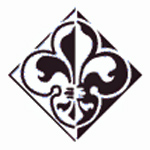
Jointly hosted by the Faversham Society and the Faversham Music Club.
Free entrance and refreshments.
Wednesday 3rd July at 7.30pm at:
The Fleur de Lis Hall,
Gatefield Lane (Off Preston Street),
Faversham,
Kent.
ME13 8NS
Book launch, introduction to the book and signing by Paul Dawson-Bowling hosted by the Wagner Society.
Free entrance and refreshments
Wednesday 15th May at 7pm at: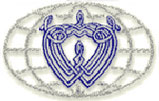
Portland Place School,
143 Great Portland Street,
London
W1W 6QN
“Paul is a wonderful author and speaker and this should be a really interesting and enjoyable evening.”
Andrea Buchanan, President of the Wagner Society
As part of ‘Gods & Heroes’, a Music Club of London weekend of masterclasses and concerts, Paul Dawson-Bowling talks to his readers about The Wagner Experience and its Meaning to Us and will be doing a book signing.
Full details of the whole Wagner weekend can be found at: Eastbourne_Wagner_weekend_PDF
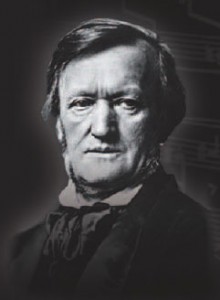
‘Gods & heros’ event location
All Saints Chapel,
Darley Road,
Eastbourne.
BN20 7PE
TICKETS AVAILABLE FROM
Eastbourne Information Centre,
Cornfield Road, Eastbourne BN21 4BQ
www.visiteastbourne.com
0871 663 0031
or from Michael Bousfield
01323 653009
TICKETS CAN ALSO BE BOUGHT ON THE DAY